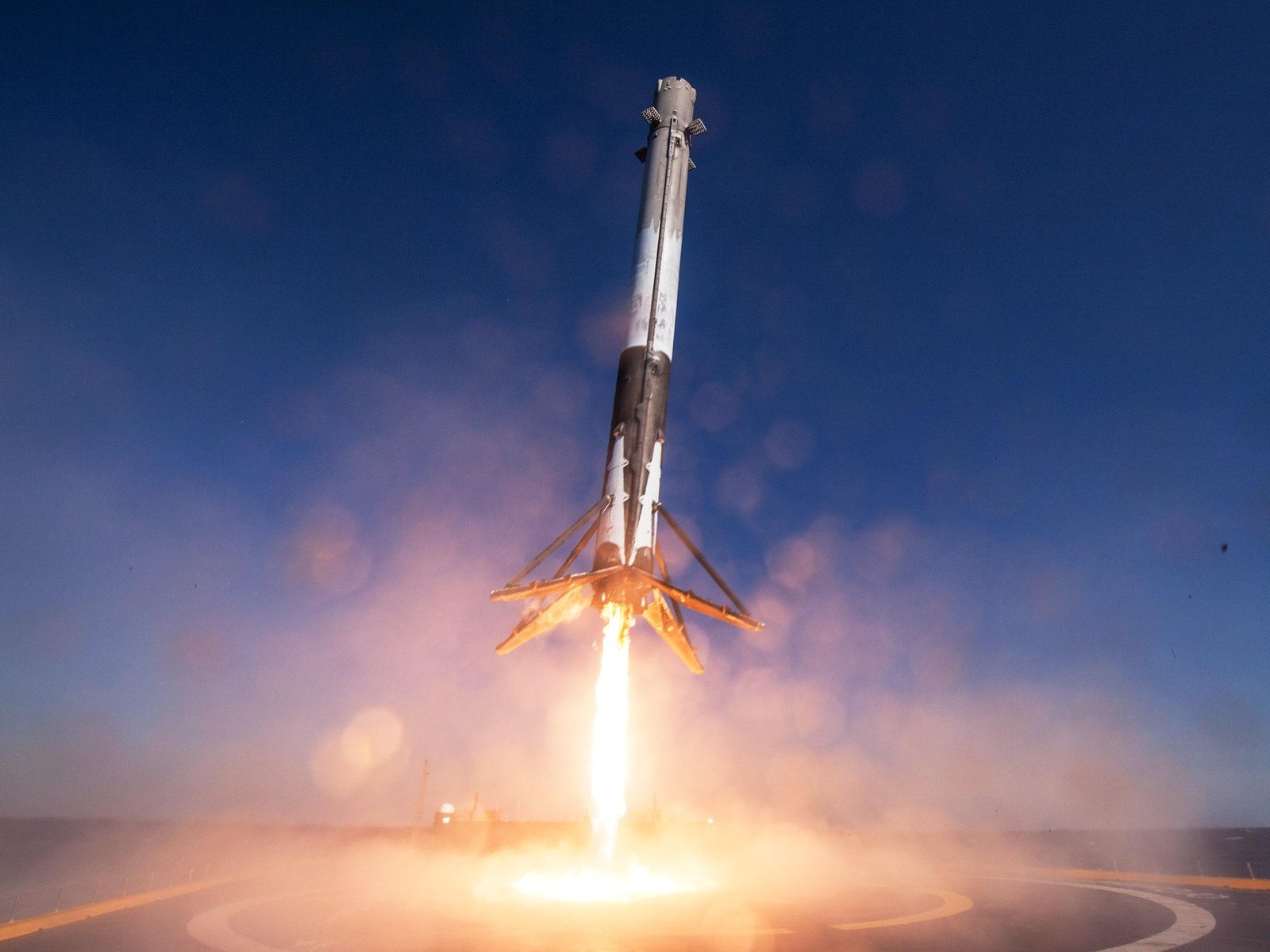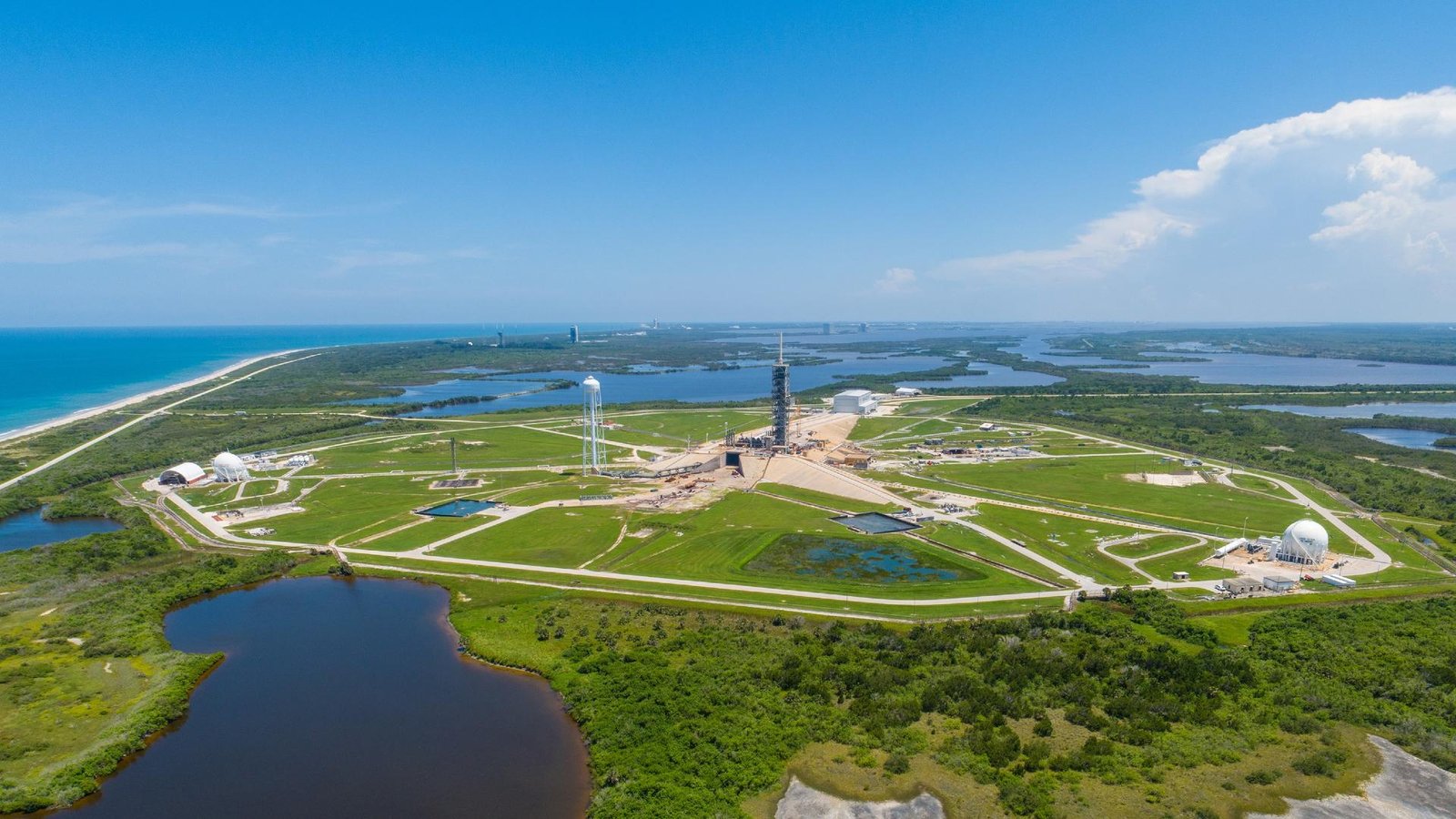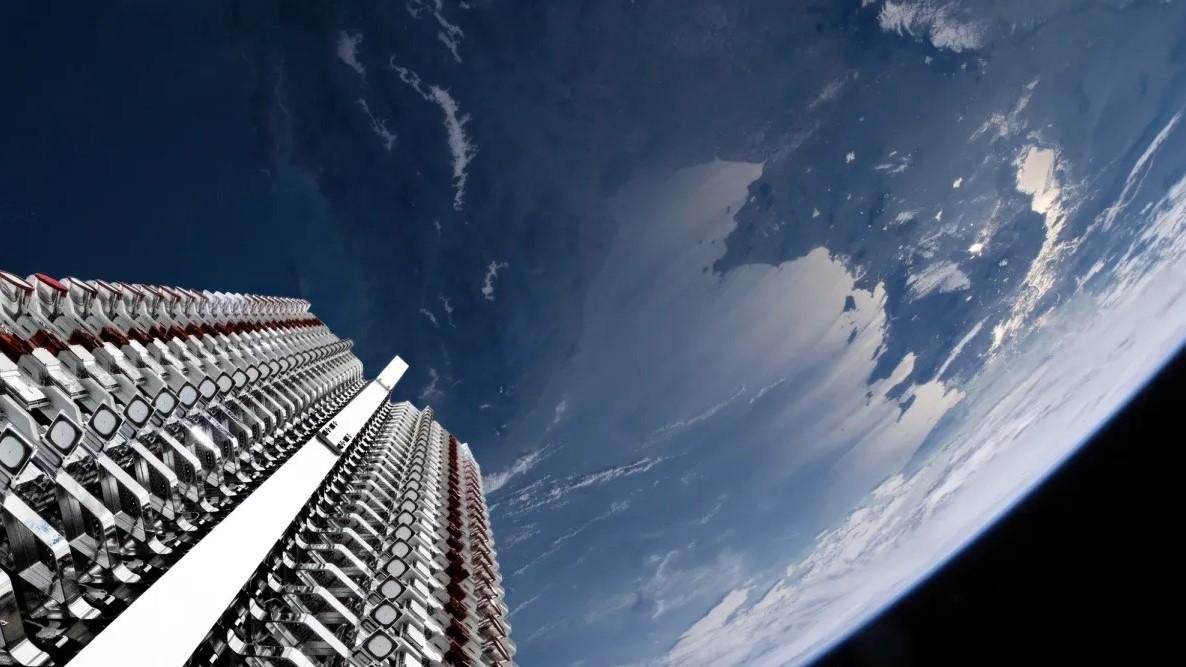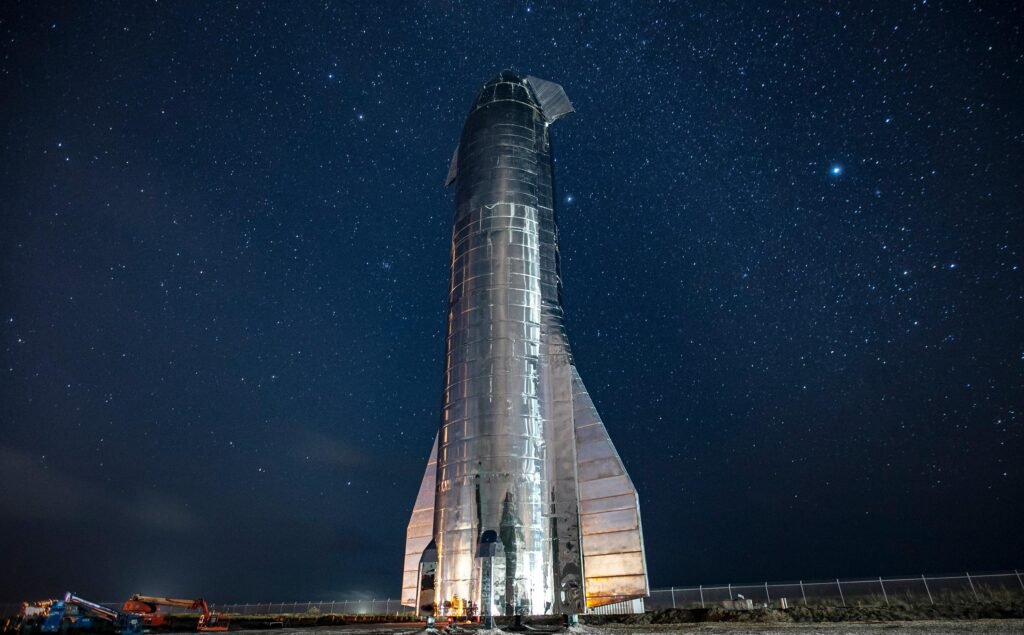In the ever-expanding realm of space exploration and satellite technology, SpaceX continues to make headlines with its ambitious plans and innovative approaches. This Friday, the company is set to elevate its contributions to global connectivity by launching a Falcon 9 rocket from Cape Canaveral, carrying a fresh batch of Starlink satellites into orbit. As the world looks onward, this launch not only represents a significant step in bridging digital divides but also highlights the relentless pursuit of technological advancements in the cosmic frontier. Join us as we delve into the details surrounding this exciting mission, its implications for internet accessibility, and the ongoing journey of SpaceX in reshaping our connection to the stars.
Falcon 9 Ignites Excitement: A New Chapter for Starlink Services
The upcoming Falcon 9 launch marks a significant milestone for SpaceX and its ambitious Starlink project. As the rocket prepares to carry a fresh batch of satellites into orbit, anticipation is palpable. This mission is set to expand the constellation’s coverage and enhance global internet accessibility, representing a leap towards bridging the digital divide. With each launch, SpaceX is not just delivering hardware; it is laying the groundwork for a future where high-speed internet is available in even the most remote corners of the world. Key highlights of this mission include:
- Increased Capacity: The new satellites will significantly boost the existing network’s capability.
- Optimized Performance: Enhanced features will improve user experience and speed.
- Global Outreach: A focus on underserved regions aims to democratize access to the internet.
Furthermore, as SpaceX continues to refine its launch systems, the engineering marvel of the Falcon 9 stands as a symbol of innovation and reliability in the aerospace community. The characteristic reusability of the Falcon 9 ensures not only cost-effectiveness but also sustainability—a key consideration in modern space ventures. Below is a quick overview of the mission details:
| Mission | Launch Date | Launch Site |
|---|---|---|
| Starlink Deployment | Friday | Cape Canaveral, FL |

Cape Canaveral: The Launchpad for a Satellite Revolution
Cape Canaveral has long been synonymous with space exploration, but it has recently cemented its status as the epicenter of a satellite revolution. With the upcoming launch of a Falcon 9 rocket, SpaceX is set to increase its already impressive constellation of Starlink satellites, aiming to bridge connectivity gaps across the globe. This strategic location on Florida’s southeast coast provides a robust launch facility, benefitting from a perfect blend of geography and infrastructure to support frequent and varied missions. The intention is clear: to deliver reliable internet service to remote areas while simultaneously pushing the boundaries of modern aerospace engineering.
The sheer frequency of launches from this hallowed ground demonstrates the increasing urgency and ambition driving the satellite industry. Key benefits of the Cape Canaveral facility include:
- Proximity to the Equator: Enhances rocket efficiency and payload capacity.
- Established Infrastructure: Supports quick turnaround times for rocket preparations.
- Access to Open Water: Ensures safety during launches and landings.
As SpaceX prepares for its scheduled launch, the anticipation ripples through both the aerospace community and the potential users of Starlink services. With plans for even more satellites on the horizon, Cape Canaveral is not just a launch site; it is a gateway to an interconnected world.

Understanding the Impact: How Starlink is Reshaping Global Connectivity
The advent of SpaceX’s Starlink satellite constellation is revolutionizing how we think about and access internet connectivity worldwide. Through its innovative approach to deploying satellite technology, Starlink is able to deliver high-speed internet services to some of the most remote and underserved regions on the planet. By sending thousands of satellites into low Earth orbit, the network minimizes latency and enhances bandwidth, creating opportunities for individuals and businesses alike to thrive in an increasingly digital world. This initiative is particularly crucial for rural communities, where terrestrial internet options are often limited or nonexistent.
Moreover, the global implications of enhanced connectivity are vast and transformative. Consider the following benefits that Starlink provides:
- Increased Access: Communities with previously no internet access can now connect to educational resources and digital marketplaces.
- Economic Growth: Small businesses can expand their online presence, reaching customers far beyond their geographic limitations.
- Telehealth Applications: Remote healthcare services become feasible in areas lacking traditional medical facilities.
- Disaster Recovery: In the wake of natural disasters, Starlink can provide immediate internet access to support recovery efforts.
As of recent launches, Starlink continues to push the boundaries of internet accessibility and speed, presenting a promising future for global communication. With each launch of new satellites, the potential to connect even the most isolated areas of the globe gets closer to reality.

Future Prospects: Recommendations for Stakeholders in the Space Industry
As the space industry continues to evolve rapidly, stakeholders must adopt a proactive approach to harness the potential of emerging technologies. Investing in innovation is paramount; this can include supporting research and development initiatives for next-generation propulsion systems or investing in autonomous satellite maintenance technologies. Furthermore, fostering collaborative partnerships across sectors—such as telecommunications, science, and even education—can lead to groundbreaking advancements and shared resources. Emphasizing sustainability by developing eco-friendly practices for both launches and satellite manufacturing will not only enhance public perception but also ensure long-term viability in a sector increasingly scrutinized for environmental impacts.
To facilitate a robust future for the industry, regulatory frameworks must keep pace with advancements. Stakeholders should advocate for streamlined regulations that do not compromise safety but allow for nimble responses to innovations. Establishing industry-wide standards for satellite operations and debris management can promote a more sustainable orbital environment. Additionally, engaging local communities and educational institutions can cultivate interest in aerospace careers, fostering the next generation of engineers and scientists. A combined focus on technological progress and community involvement will be crucial for sustaining momentum and advancing the ambitions of the space industry.
Q&A
Q&A: SpaceX Schedules Falcon 9 Rocket Launch for Friday Carrying Starlink Satellites from Cape Canaveral
Q1: What is the purpose of the Falcon 9 rocket launch taking place this Friday?
A1: The Falcon 9 rocket is scheduled to launch a batch of Starlink satellites into orbit. Starlink, a satellite internet constellation developed by SpaceX, aims to provide high-speed internet access across the globe, particularly in underserved and remote areas.
Q2: Where will the launch take place?
A2: The launch is set to occur from Cape Canaveral Space Force Station in Florida, a historic site that has been the backdrop for numerous space missions since the early days of space exploration.
Q3: When will the launch happen, and how can enthusiasts watch it?
A3: The launch is slated for Friday, with specific timing details announced closer to the event. SpaceX typically offers live streams of their launches on their official website and social media platforms, allowing fans and space enthusiasts to watch the mission unfold in real-time.
Q4: How many satellites are included in this launch?
A4: While the exact number of satellites scheduled for this particular launch hasn’t been disclosed, previous Starlink missions have deployed anywhere from 60 to 100 satellites at a time. Each launch contributes to the growing Starlink constellation aiming to achieve global coverage.
Q5: What advancements or updates can we expect in Starlink technology with this launch?
A5: Each batch of Starlink satellites typically comes equipped with improvements based on user feedback and technological advancements. Enhanced features may include increased bandwidth, reduced latency, and improved performance in adverse weather conditions. The specifics for this launch will likely be revealed during or after the mission.
Q6: Why is the Falcon 9 rocket chosen for this mission?
A6: The Falcon 9 is SpaceX’s workhorse rocket, known for its reliability and reusability. Its design allows it to carry large payloads into low Earth orbit while minimizing costs. The rocket’s ability to land and be reused has revolutionized the space launch industry, making it a fitting choice for launching Starlink satellites.
Q7: How does this launch fit into SpaceX’s broader goals?
A7: This launch is a crucial step in SpaceX’s mission to provide global internet coverage through the Starlink satellite network. As SpaceX continues to deploy more satellites, it aims to create a robust network that can enhance connectivity for individuals, businesses, and organizations across different regions of the world.
Q8: What are the potential implications of the expanding Starlink network?
A8: The growing Starlink network could significantly impact global internet accessibility, especially in areas where traditional fiber-optic infrastructure is lacking. It has the potential to bridge the digital divide, enabling education, telehealth, and remote work opportunities for millions.
Q9: Are there any environmental concerns related to the launch?
A9: As with any space activity, concerns about space debris and the environmental impact of launch operations are important. SpaceX is committed to responsible satellite deployment and has made efforts to reduce the risk of debris. They also monitor environmental impacts, collaborating with regulations and guidelines to minimize their ecological footprint.
Q10: What happens after the launch?
A10: Following the launch, the deployed satellites will undergo testing to ensure they are functioning correctly before joining the operational Starlink constellation. SpaceX continuously tracks and manages these satellites, ensuring they remain in their designated orbits to provide seamless internet service.
In Retrospect
As the countdown to Friday’s Falcon 9 launch approaches, the excitement in the air is palpable. With the rocket poised to deliver another batch of Starlink satellites into orbit, SpaceX continues to carve its path in the realm of space exploration and communication. This mission not only highlights the relentless innovation of the aerospace industry but also promises to extend high-speed internet access to even the most remote corners of the globe. As we await the roar of engines and the breathtaking ascent into the cosmos, we are reminded of the legacy of exploration that drives humanity forward. Stay tuned for updates on this launch and what it means for the future of connectivity in our increasingly digital world. The stars await, and with them, the potential for limitless possibilities.

